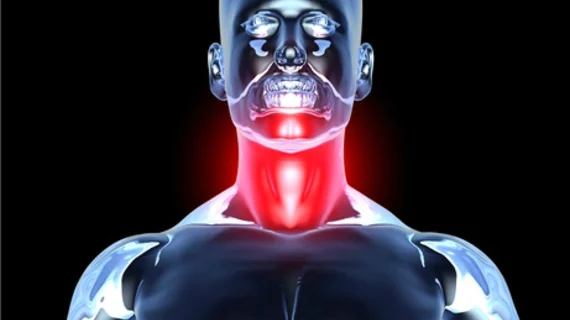Research presented June 1 at the 2018 American Society of Clinical Oncology (ASCO) annual meeting in Chicago may help extend survival rates in patients with esophageal cancer by utilizing positron emission tomography (PET), according to a news release from the University of Colorado Cancer Center.
Researchers of the trial, dubbed “CALGB 80303,” found that imaging providers may identify esophageal cancer patients unresponsive to induction chemotherapy with the help of PET scans. This finding prompted the researchers to switch the study cohort to a new chemotherapy regimen, FOLFOX, during chemoradiation.
The average overall survival rate extended to 27 months, up from an 18-month average survival rate in previous studies that used the same chemotherapy protocol.
More than half of respondents (55 percent) of the new chemotherapy regimen who stayed on FOLFOX during the entirety of chemoradiation, usually lasting five and a half weeks followed by surgery, showed a four-year survival rate—“the best outcome reported for patients with this disease,” according to the press release.
“Esophageal cancer patients undergo treatment to shrink tumors before surgery. We wanted to see if PET scan could help us personalize the best pre-operative treatment,” said Karyn Goodman, MD, MS, Grohne Chair of Clinical Oncology at the University of Colorado Cancer Center, in a prepared statement.
A total of 257 U.S. patients with adenocarcinoma of the esophagus or gastroesophageal junction underwent a PET scan when diagnosed, along with having six weeks of post-induction therapy with regimen FOLFOX, according to the researchers.
“If there was a good response by PET, they continued on the same chemotherapy during chemoradiation. If they had a poor response, they switched over to the alternative chemotherapy agent during chemoradiation,” Goodman said.
The patients responsive to induction therapy had a higher average survival rate (46 months) compared to those who were non-responders (27 months), which Goodman explained her team initially expected.
“Twenty-seven months median overall survival is much better than we have seen in previous studies for patients who do not respond to induction chemotherapy,” Goodman said. “We show that using PET scan at baseline and then again after induction chemotherapy can help to determine who should stick with the chemotherapy used during induction and who should switch to the other regimen during chemoradiation.”

